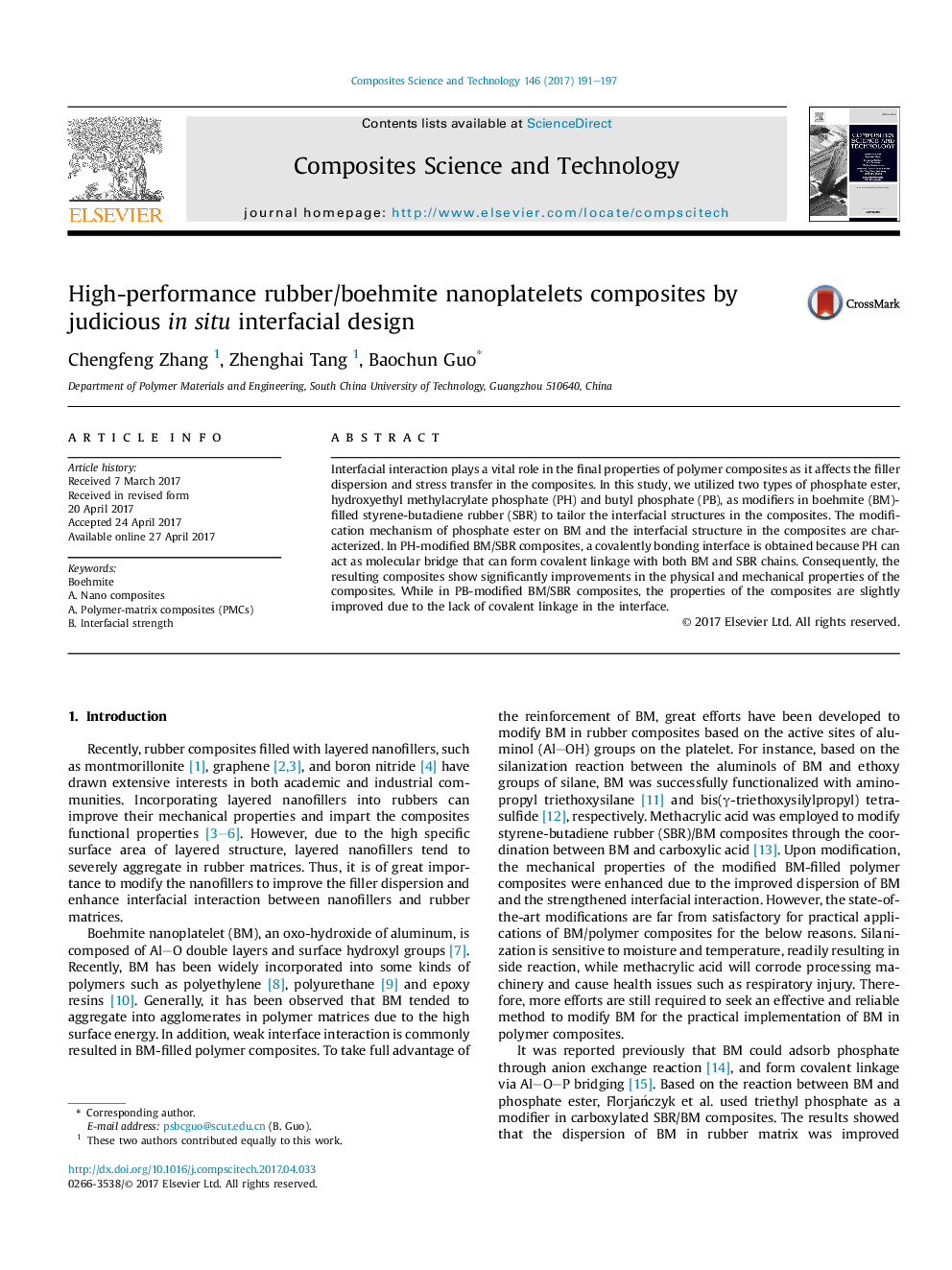| Article ID | Journal | Published Year | Pages | File Type |
|---|---|---|---|---|
| 5022111 | Composites Science and Technology | 2017 | 7 Pages |
Abstract
Interfacial interaction plays a vital role in the final properties of polymer composites as it affects the filler dispersion and stress transfer in the composites. In this study, we utilized two types of phosphate ester, hydroxyethyl methylacrylate phosphate (PH) and butyl phosphate (PB), as modifiers in boehmite (BM)-filled styrene-butadiene rubber (SBR) to tailor the interfacial structures in the composites. The modification mechanism of phosphate ester on BM and the interfacial structure in the composites are characterized. In PH-modified BM/SBR composites, a covalently bonding interface is obtained because PH can act as molecular bridge that can form covalent linkage with both BM and SBR chains. Consequently, the resulting composites show significantly improvements in the physical and mechanical properties of the composites. While in PB-modified BM/SBR composites, the properties of the composites are slightly improved due to the lack of covalent linkage in the interface.
Related Topics
Physical Sciences and Engineering
Engineering
Engineering (General)
Authors
Chengfeng Zhang, Zhenghai Tang, Baochun Guo,
